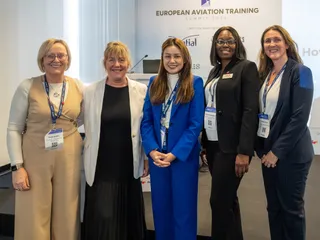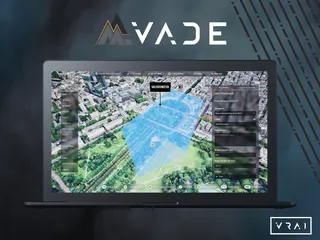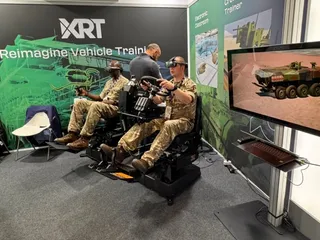WiAT 2025: Future-Proofing the Aviation Training Pipeline
Contact Our Team
For more information about how Halldale can add value to your marketing and promotional campaigns or to discuss event exhibitor and sponsorship opportunities, contact our team to find out more
The Americas -
holly.foster@halldale.com
Rest of World -
jeremy@halldale.com

The annual Women in Aviation Training (WiAT) session at EATS 2025 once again brought together an incredible cross-section of the aviation training community - trainers, airline representatives, regulators, and industry leaders - to discuss one of the most pressing questions facing the sector today: how do we future-proof the training pipeline?
This year’s workshop format divided attendees into groups to explore four interlinked themes:
- Motivations to become a trainer
- What makes a good trainer?
- Trainer recruitment transparency
- Future-proofing the training pipeline
I joined one of the four tables discussing the final topic, a deep and candid conversation about the realities of instructor recruitment, retention, and development, with particular emphasis on flexibility, diversity, and the need to make training a truly attractive career path.
Balancing Passion, Flexibility, and Sustainability
The discussion began with a clear consensus: while many pilots are interested in instructing, the path into training isn’t always easy or accessible. Current structures often make it difficult for instructors to balance professional and personal commitments - especially for women or men with family responsibilities.
Full-time contracts, irregular simulator hours, and a lack of flexible scheduling were all cited as barriers. As one participant noted, “To be an instructor today requires a full-time commitment, and that immediately rules out anyone who can’t fit their life around that model.”
Companies that truly want to attract and retain the best trainers, it was agreed, need to think differently about how they support instructors, not just how they select them.
Financial and Structural Barriers
Money and structure remain sensitive but vital topics. Instructors are often paid only for simulator hours, with no compensation for preparation or follow-up work - even though these tasks can add many hours to their day.
Daily flying allowances, which contribute significantly to a pilot’s income, are also lost when moving into training roles. This imbalance makes it hard to justify the transition unless the motivation to teach is deeply personal. As one participant observed, “We say instructing is about passion — and it is — but passion alone won’t pay the bills.”
Without addressing these structural and financial barriers, companies risk losing talented trainers to better-paid flying opportunities or entirely different industries.
Recruitment, Data, and the Right Fit
Recruitment practices vary widely. Many airlines receive a strong volume of applications for instructor roles but still lack the data-driven tools to identify who will truly excel. Some use psychometric assessments or simulator performance metrics, but most still rely on interviews and personal impressions.
The group also discussed the evolving profile of instructors. Historically, only captains were eligible to teach, but first officers are now increasingly taking on training responsibilities, with strong results. Cost pressures and cultural change are gradually reshaping long-standing assumptions about who can and should instruct.
Gender, Culture, and Perceptions of Credibility
Despite progress, the discussion acknowledged that gender and cultural barriers persist. Female instructors still report instances of initial discomfort or resistance from male trainees, requiring additional effort to establish authority.
There’s also an ongoing debate around credibility and age - younger instructors often find it difficult to be taken seriously, regardless of their competence or skill. “Does age equal credibility?” one participant asked. “Or should we be redefining what expertise looks like in a modern cockpit?”
These are slow-moving cultural shifts, but conversations like these — open, honest, and constructive — are how change begins.
Motivation, Retention, and Identity
The motivation to instruct remains deeply personal. Many pilots say they “just love to fly” and see training as a sidestep rather than a destination. The challenge for the industry is to make instructing not just a stopgap, but a career worth aspiring to.
One practical idea raised was to ensure instructors retain opportunities to fly — reinforcing their identity as pilots as well as educators. “If you want people to teach for the right reasons,” a participant noted, “you have to let them still feel like pilots.”
A Global Challenge
Although specific practices and policies differ by geography, the core challenges are universal: inflexible contracts, inconsistent pay structures, and cultural barriers that slow progress. Some organisations are introducing more flexible models — such as hybrid instructor roles or block-hour contracts — but these remain the exception rather than the norm.
Looking Ahead
As our table concluded, one message stood out clearly: future-proofing the training pipeline isn’t just about recruitment, it’s about culture.
To build a sustainable, diverse instructor workforce, the industry must address the structural, financial, and cultural barriers that continue to limit access and progression. Flexibility, fair compensation, inclusive leadership, and data-driven recruitment are key to developing the next generation of instructors who will train tomorrow’s pilots.
For me, the session underscored why WiAT exists - to create a space where these conversations can happen openly, connecting people across regions, roles, and perspectives. If today’s discussion was anything to go by, the will to change is there. Now, it’s about turning dialogue into action.


